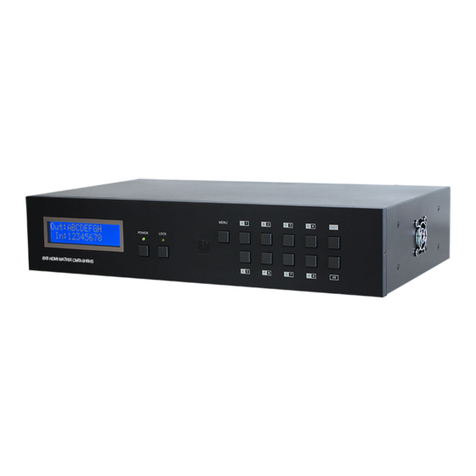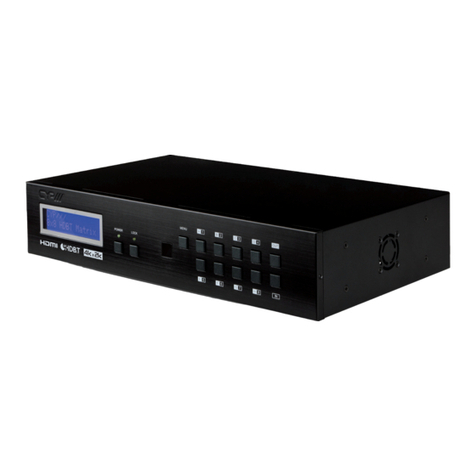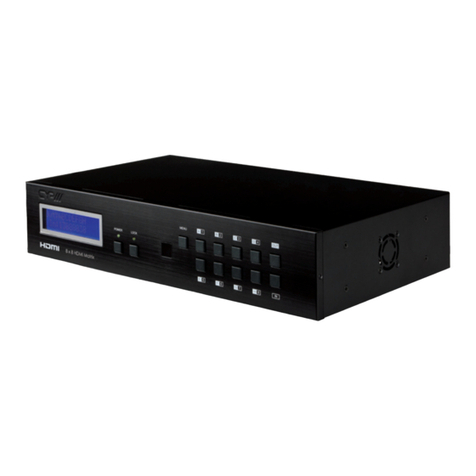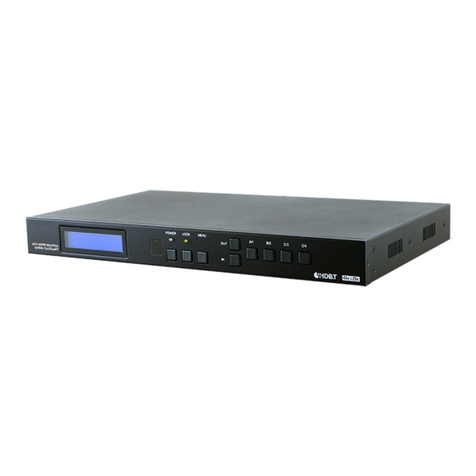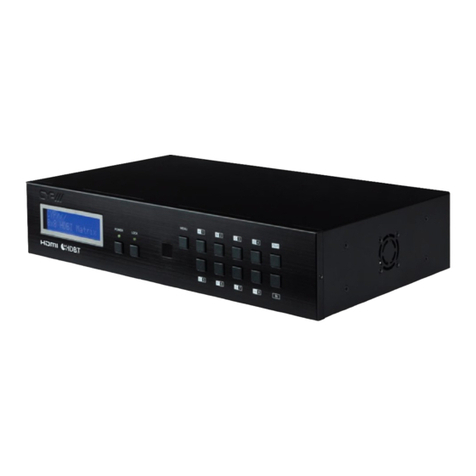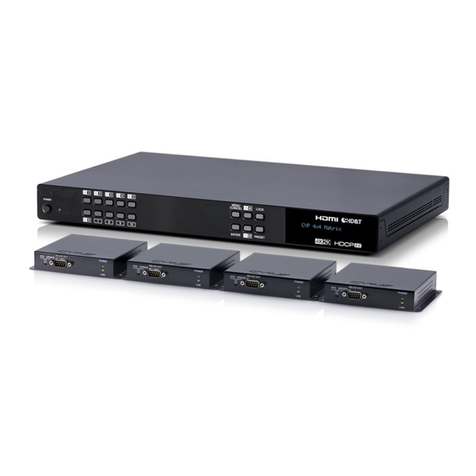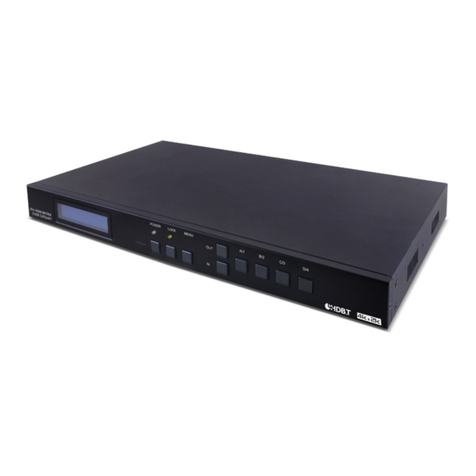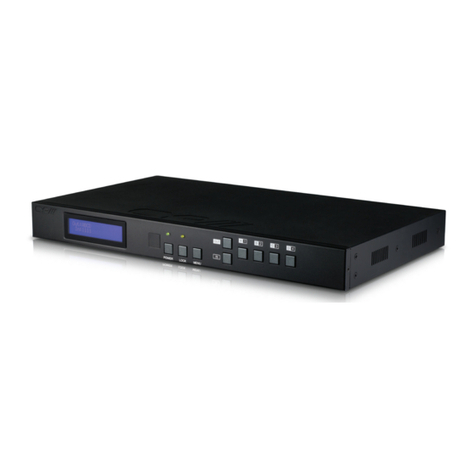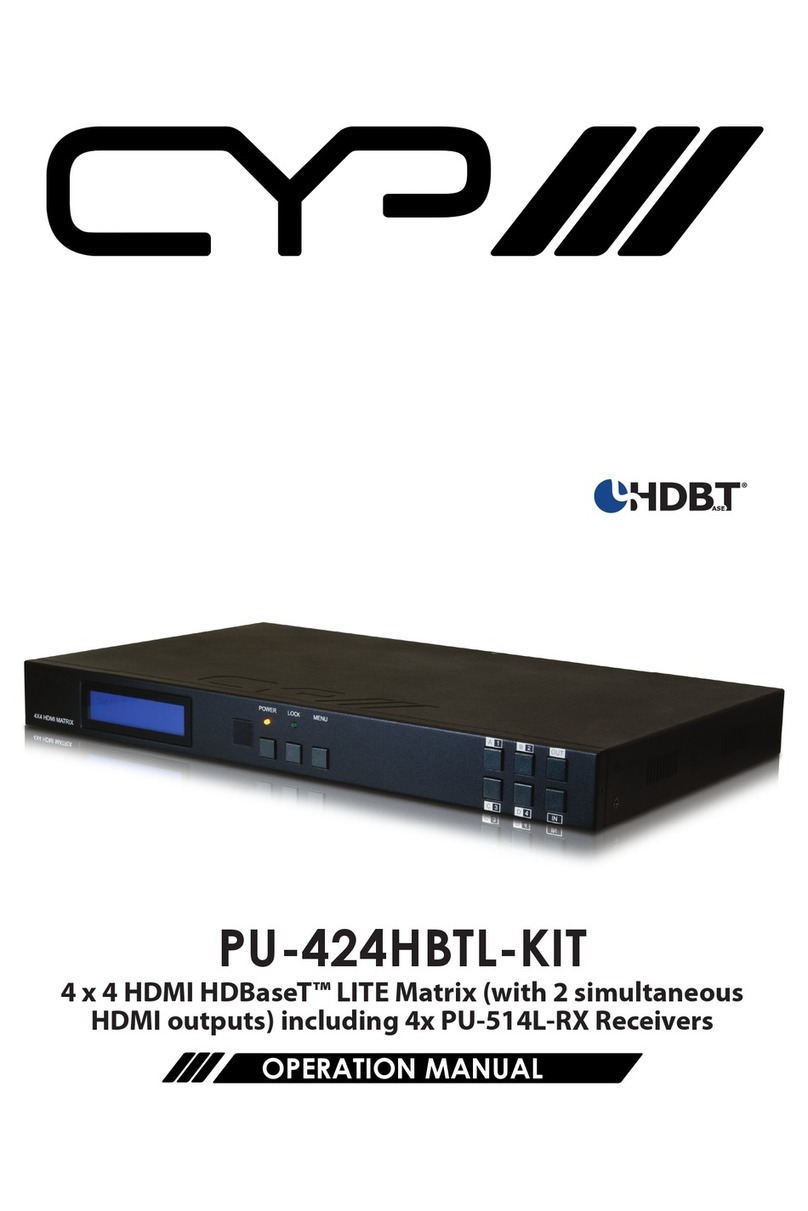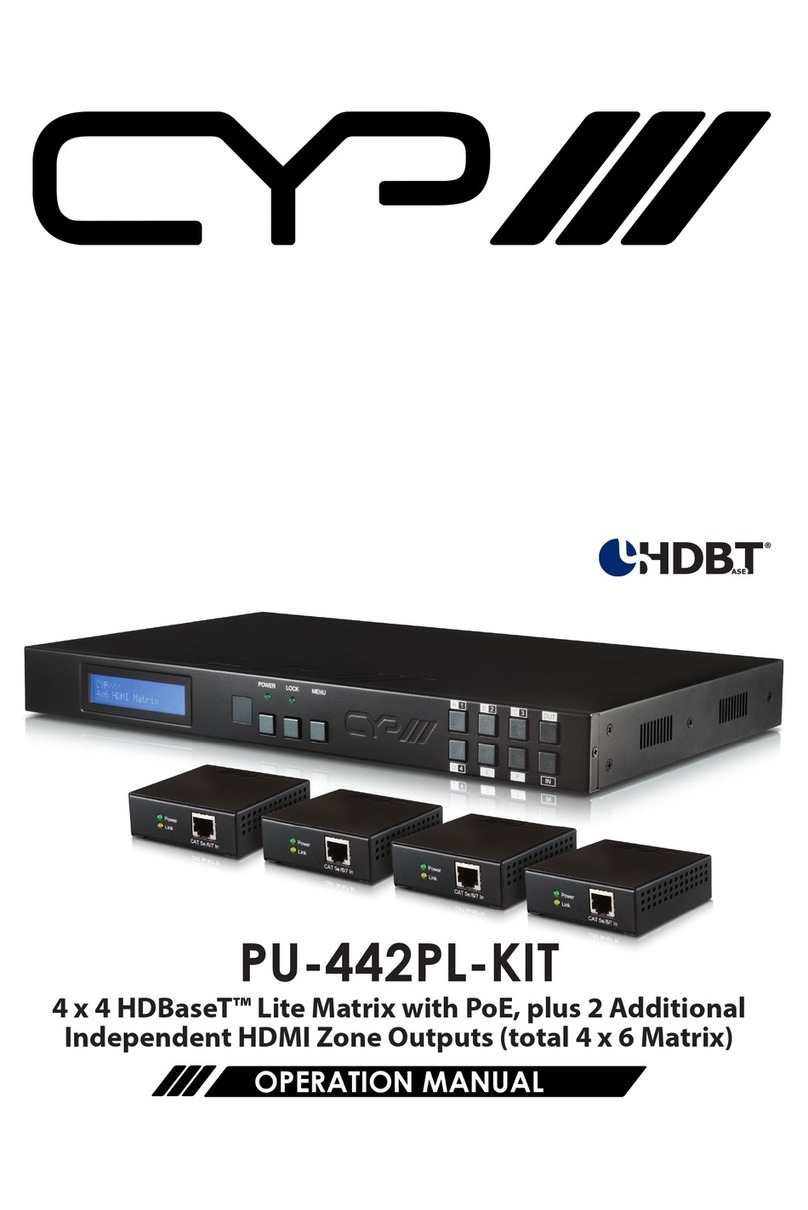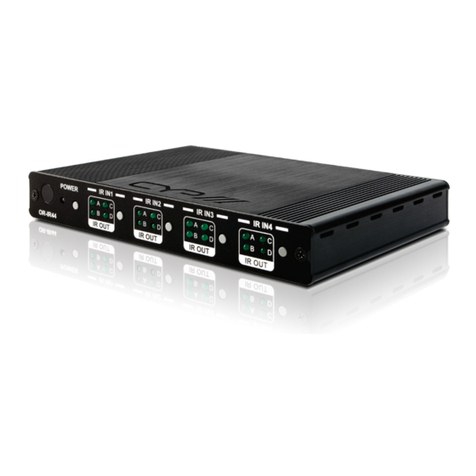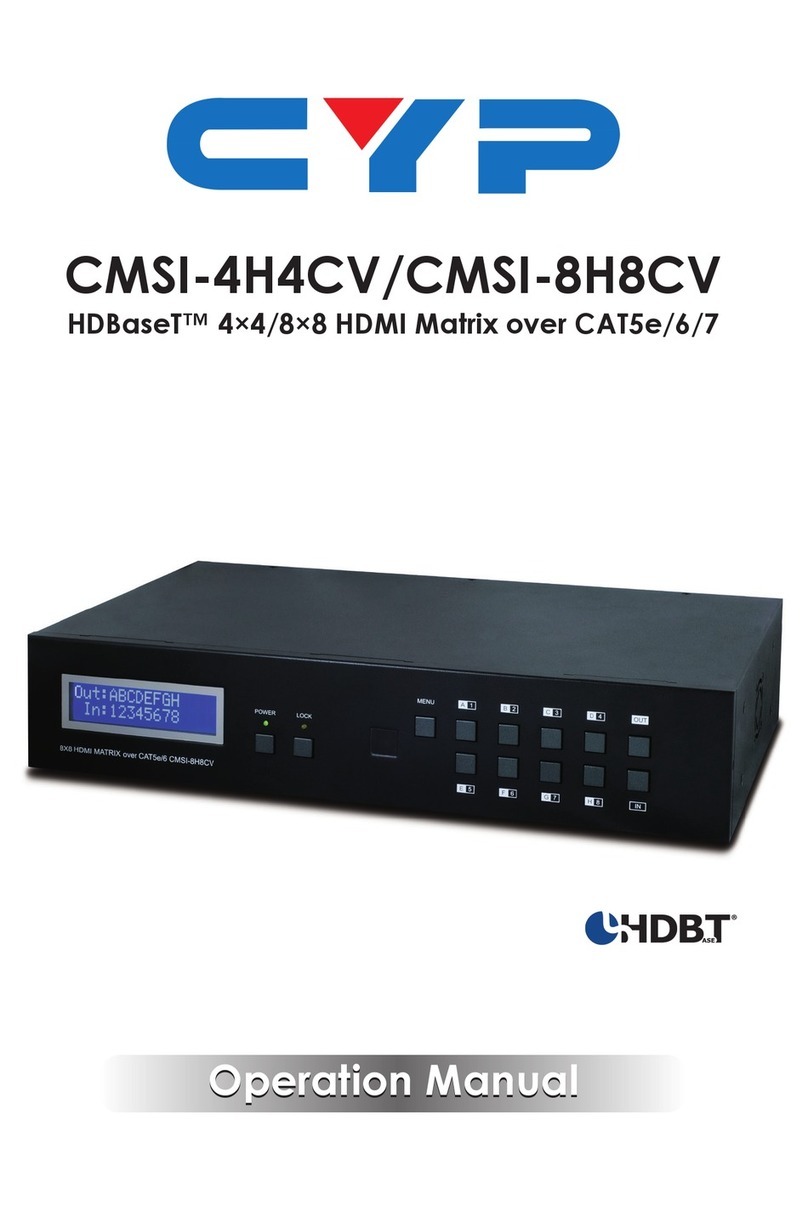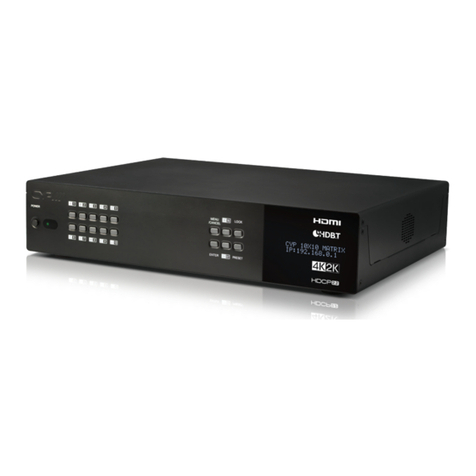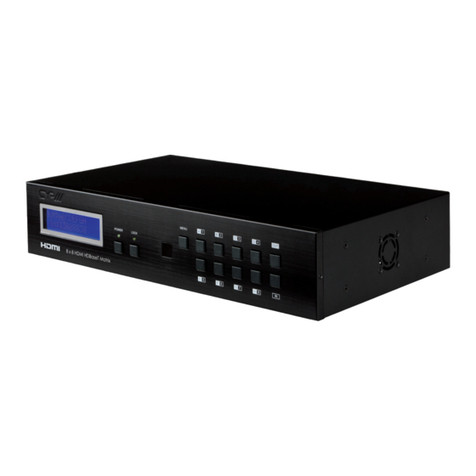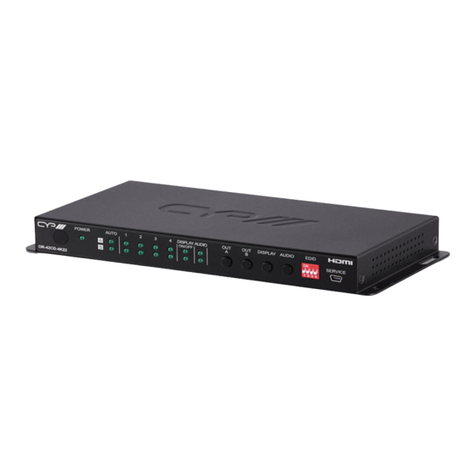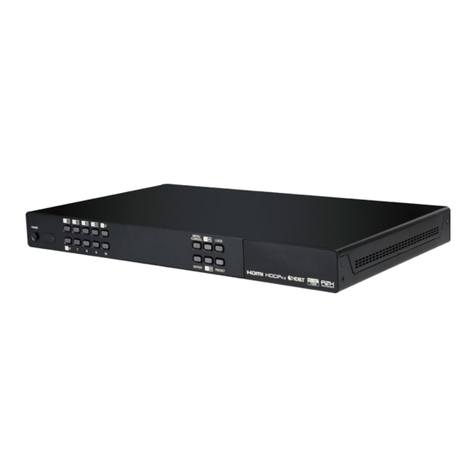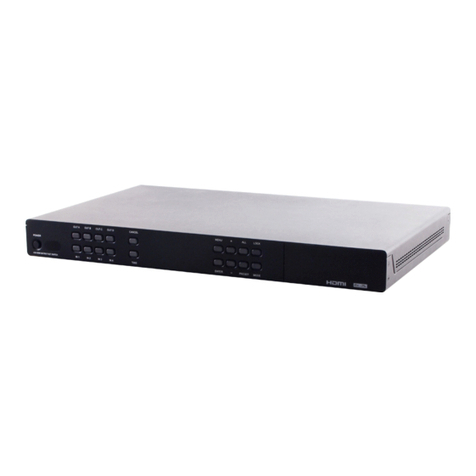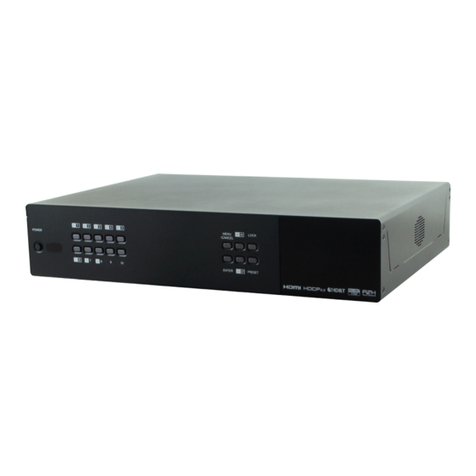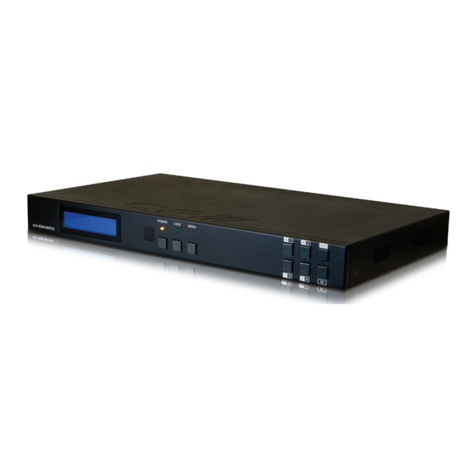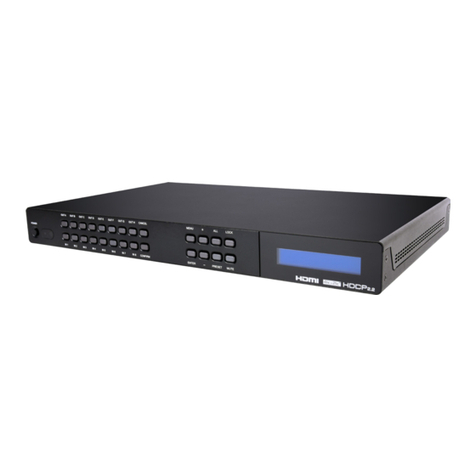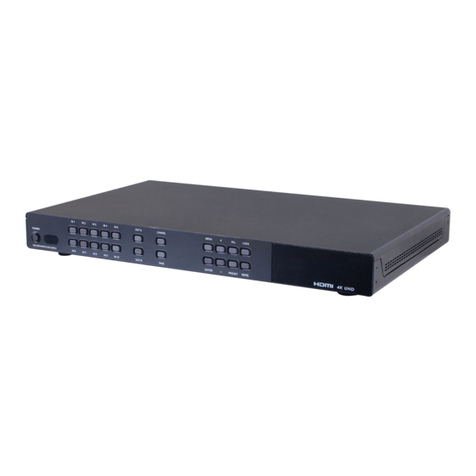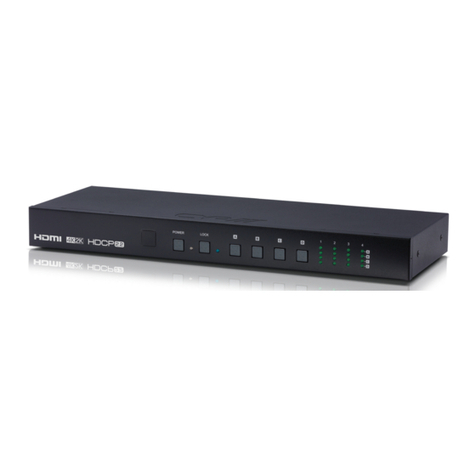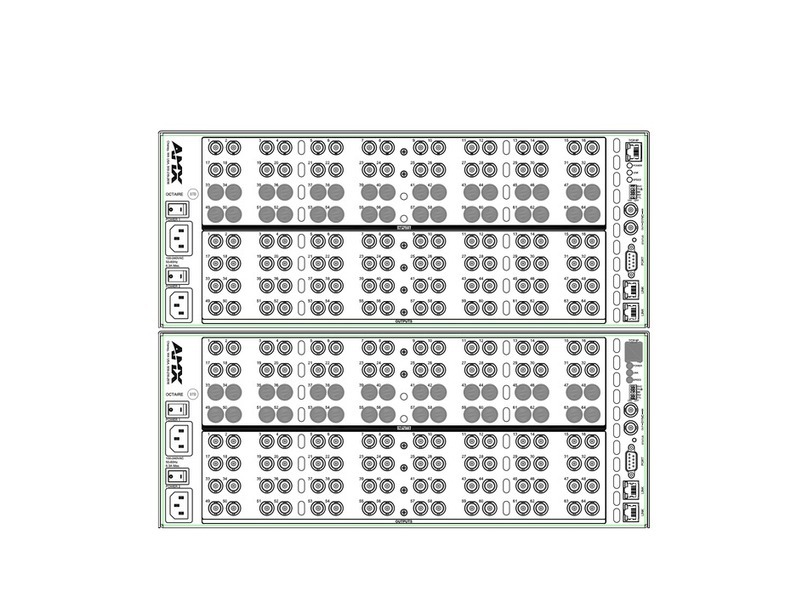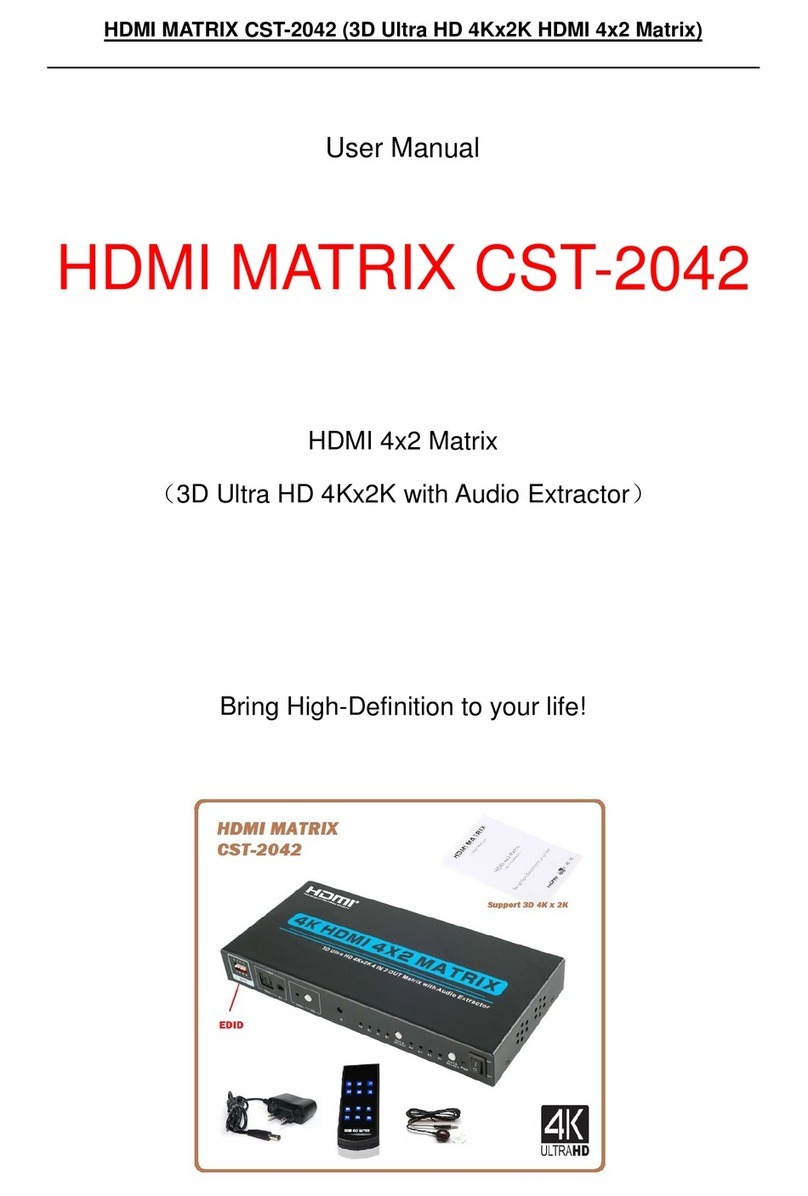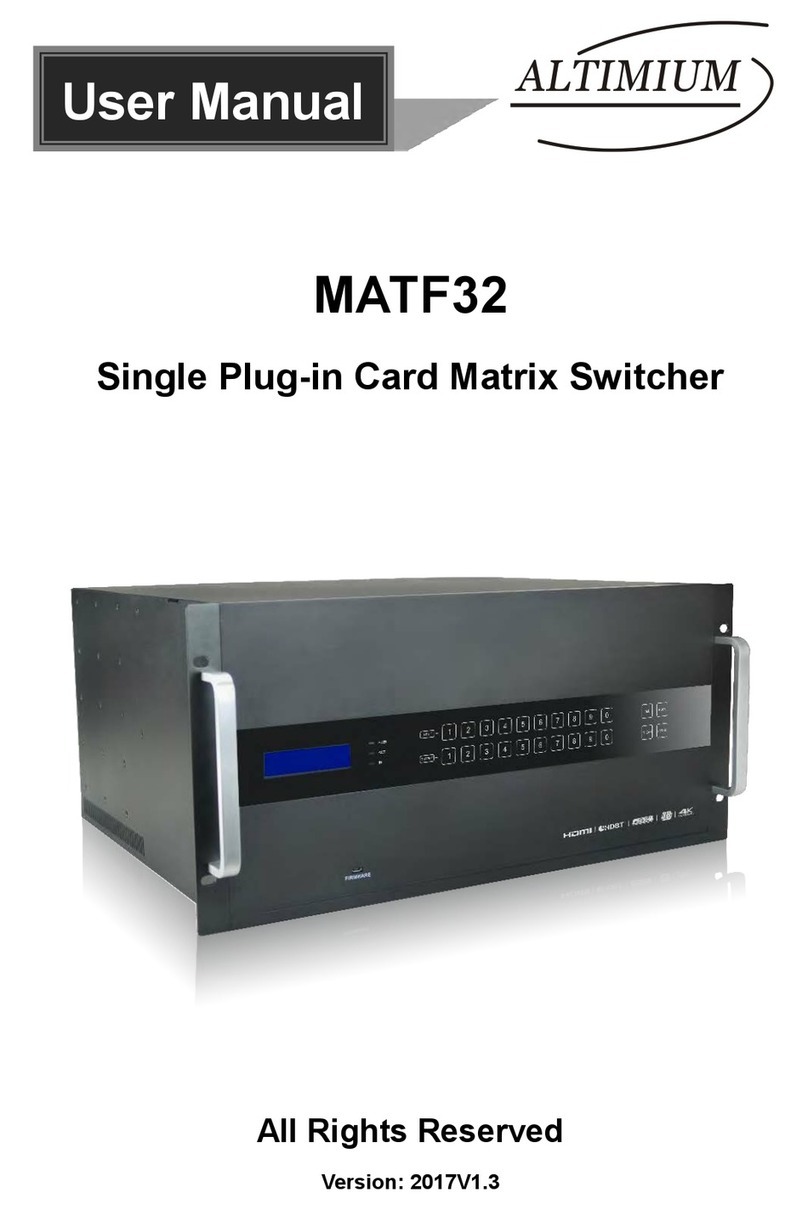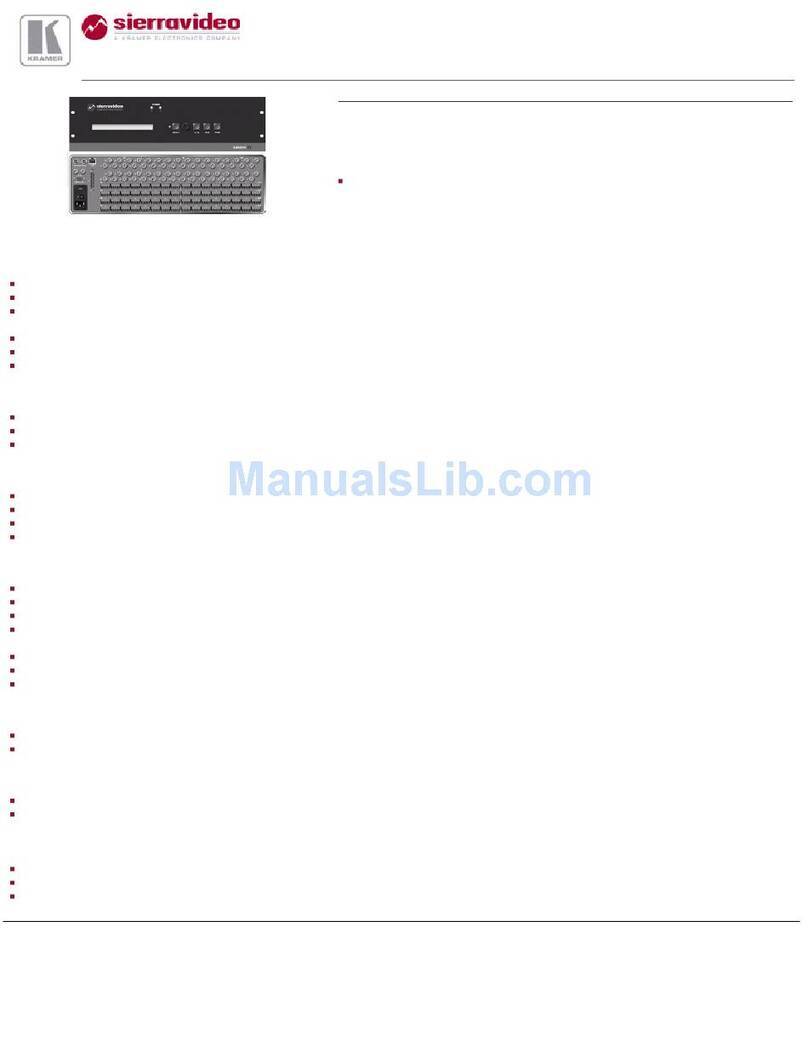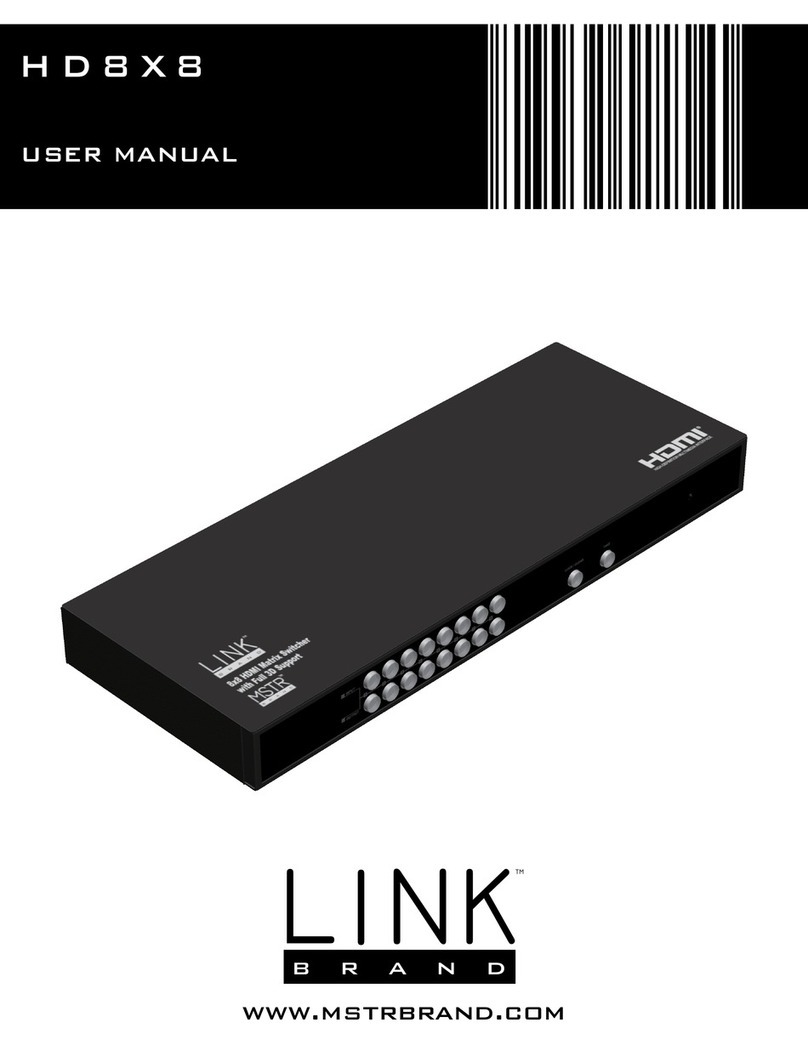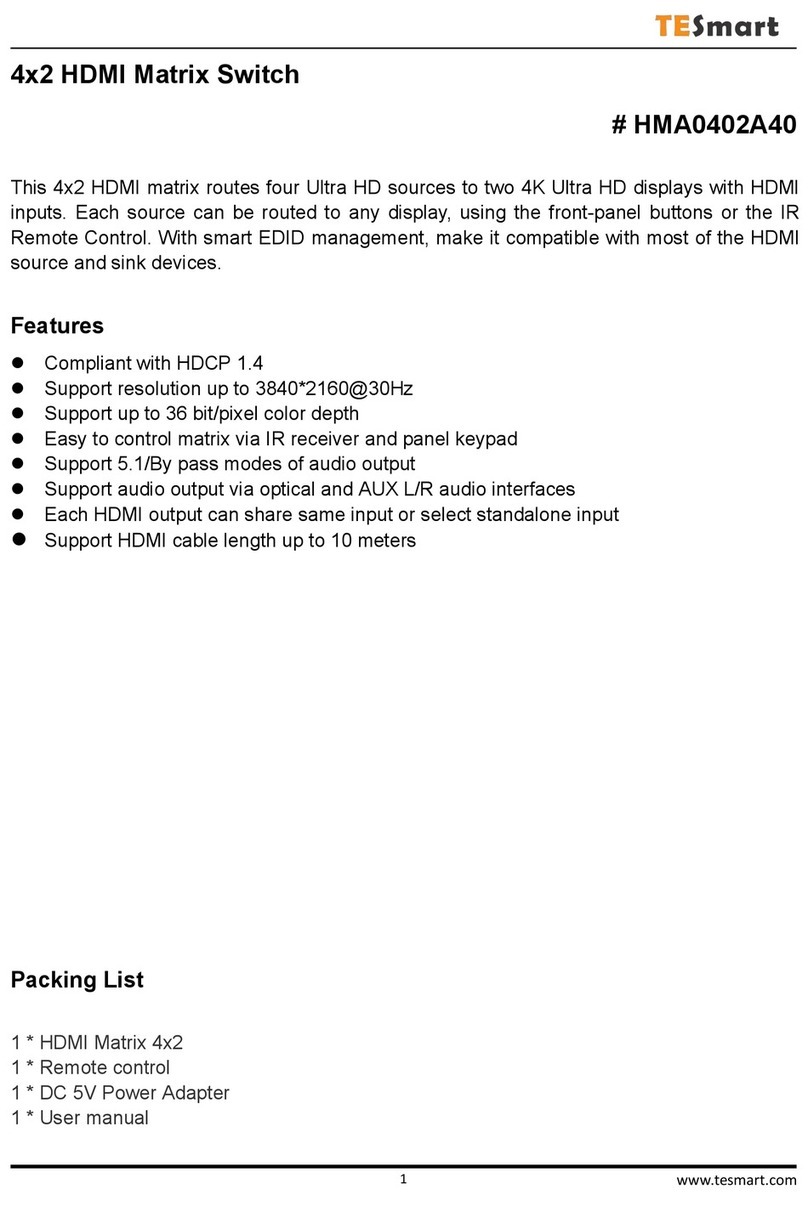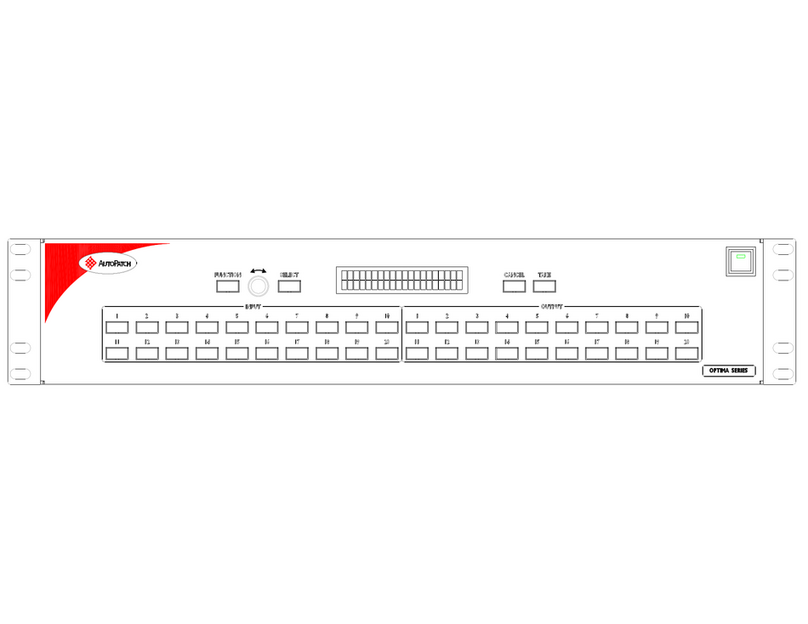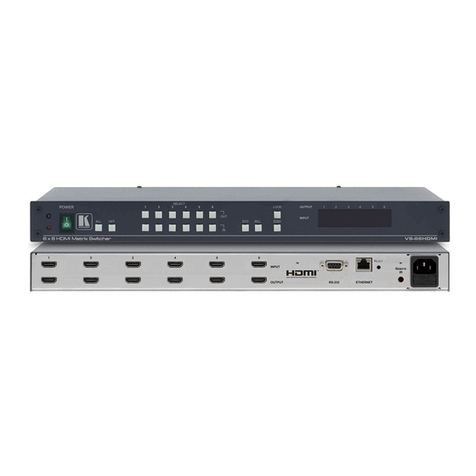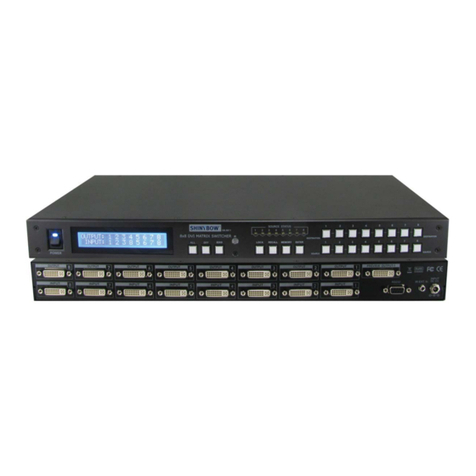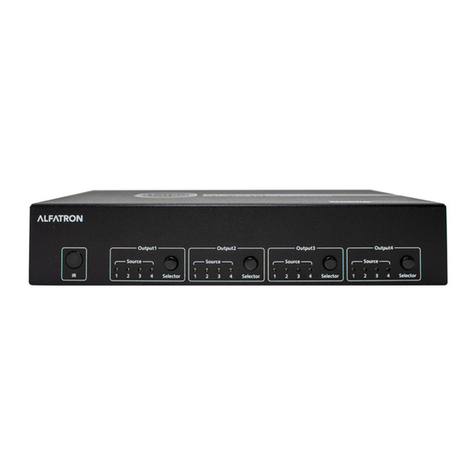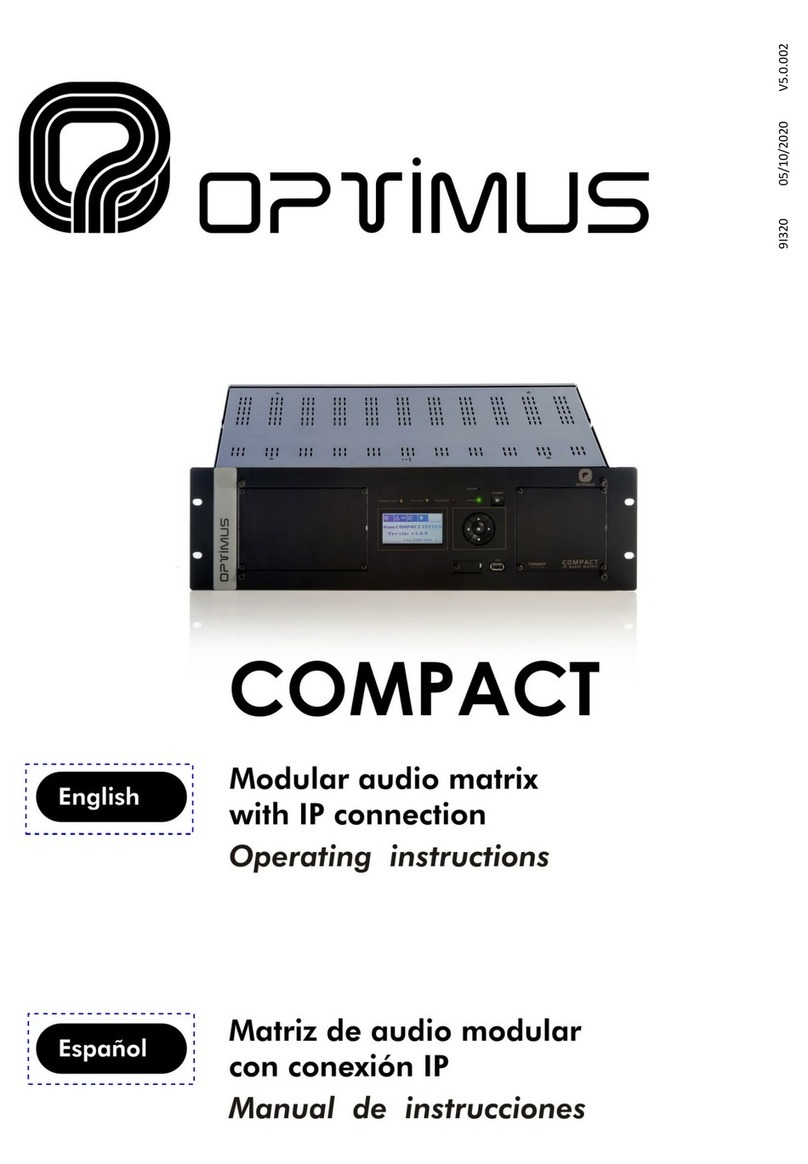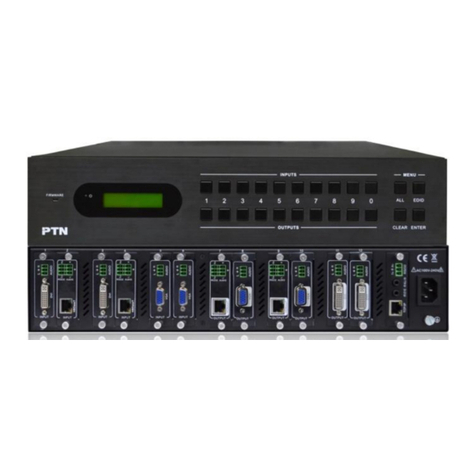
2
4. SYSTEM REQUIREMENTS
• HDMI source equipment such as media players, video game consoles,
PCs, or set-top boxes.
• HDMI receiving equipment such as HDTVs, monitors or audio ampliers.
• Analog audio receiving equipment such as audio ampliers or powered
speakers.
• The use of Premium High Speed HDMI cables, and industry standard,
Cat.6, Cat.6A or Cat.7, is highly recommended.
• 3rd party control software, such as Dante Controller from Audinate, can
provide additional conguration controls, but is optional.
• An active network connection from a Gigabit network switch or router with
QoS support is highly recommended for Dante audio extension. Additional
Dante networking details can be found here:
https://www.audinate.com/support/networks-and-switches
5. FEATURES
• HDMI 2.0 and DVI 1.0 compliant (with the use of an HDMI-DVI adapter)
• HDCP 1.x and 2.2 compliant
• 4 HDMI inputs and 2 HDMI outputs
• 4×2 matrix routing with per-output analog audio extraction
• Supports up to 4K UHD+ (18Gbps, 4K@50/60Hz 4:4:4, 8-bit) video input
and output
• Support pass-through of many audio formats including 8 channel LPCM,
Bitstream, and HD Bitstream
• Each output’s audio is selectable between the routed HDMI source or an
independent Dante network audio source
• Compatible with existing Dante and AES67 audio networks for
transmission and reception of uncompressed audio with near-zero latency
• Simple and easy network audio routing via WebGUI or 3rd party control
software (available for both Windows and macOS systems)
• Per-input EDID management with internal or external EDID options
• Controllable via front panel buttons, WebGUI, Telnet, and RS-232
